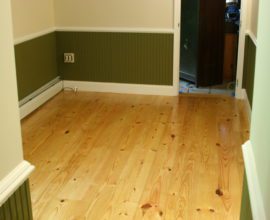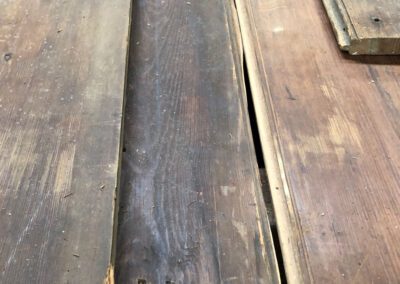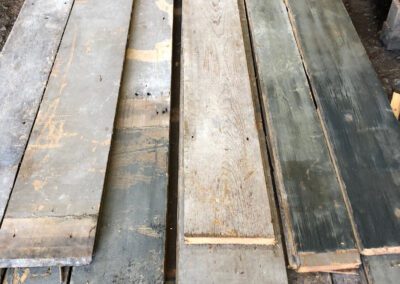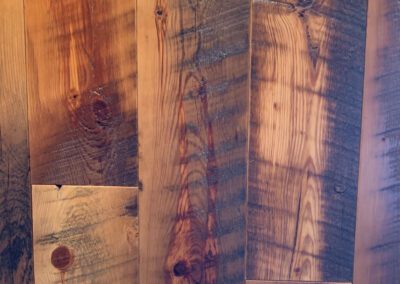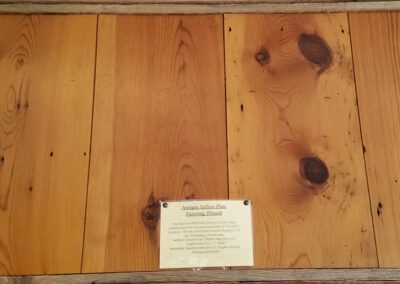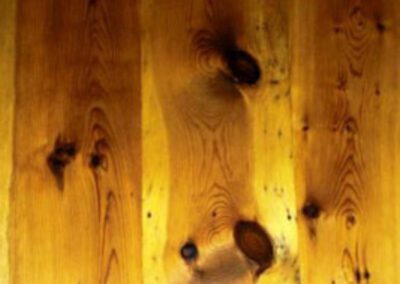Reclaimed Yellow Pine Flooring
A popular choice, reclaimed original yellow pine flooring is a specialty at JC Woodworking. Since we are based in Pennsylvania, we are fortunate to have access to some of the oldest and most beautiful footworn floors available in the United States. On some lots of flooring, the antique wood has been walked upon for over 200 years. Original yellow pine flooring is often painted on the bottom of the boards, because it was in fashion to paint the exposed boards from the room below.
Specifications
Widths: Random 6″ – 12″ | Lengths: 4′ – 12′
Available milled or “in–the–raw” (See below for details.)
Milled Wood Flooring
• Kiln dried
• Planed to 3/4″ from the bottom
• Run with either straight edges or tongue and groove
• Either planed completely or skip-planed on the top
Completely planed boards are more consistent on the top, as the original surface (or “skin”) is completely removed, leaving a perfectly flat top. Skip planing is the process by which we take off only the high spots in the board, leaving the original surface on the low spots. Completely planed boards are slightly more formal looking, while skip planed boards tend to have more character, such as an original saw mark and a higher degree of variation in color and texture.
In-The-Raw Wood Flooring
When reclaimed wood is delivered exactly as it was removed from an 1800’s structure, it is called “in-the-raw.”
• Boards are typically 1″ – 1-1/4″ thick
• Faces are untouched — expect the wood to be delivered with dirt, slate dust or broken tongues.
• No two boards will be the exact same width and some boards may even be slightly wider at one end than the other. Keep in mind that when these boards were cut, they were following the size of the tree. These boards were cut 100% for function and not at all for form!
The picture in the gallery below shows the board sanded on one half and rubbed with a wet towel. While it will take any stain, the natural patina is most people’s preference. If purchased “in the raw,” most people (or their contractors) will rip the edges to the nearest inch so that you have straight boards. They will then plane the bottoms so that you have uniform thicknesses.
Many people will lay the boards with straight edges rather than putting on a new tongue and groove. This is called butt jointing. In this case, it is recommended that you lay black roofing paper between your floor and subfloor. This will prevent seeing plywood in the small cracks when the boards expand and contract.
After laid, the tops can be sanded to your personal preference, leaving as much or as little of the original surface as you like. Many people will face nail the boards with Tremont reproduction nails or use screws with wooden pegs to cover them.
If you are buying the material in the raw, we recommend adding an extra 25-30% to the footage, as you will be losing material in the milling process as well as the typical 10-15% in laying.
— Sample Gallery —
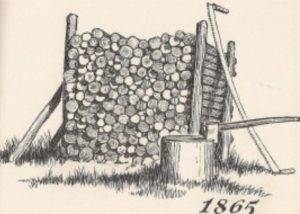
“The heft and feel of a well-worn handle,
The sight of shavings that curl from a blade;
The logs in the woodpile, the sentiment of huge
beams in an old-fashioned house;
The smell of fresh cut timbers and the pungent
fragrance of burning leaves;
The crackle of kindling and the hiss of burning logs.
Abundant to all the needs of man, how poor the world would be without wood”
-Everard Hinrichs
Contact Us
Phone:
267-404-2214
Email:
jcwoodworking@oldreclaimedwood.com
Store Address:
255 Route 313
Perkasie, PA 18944

